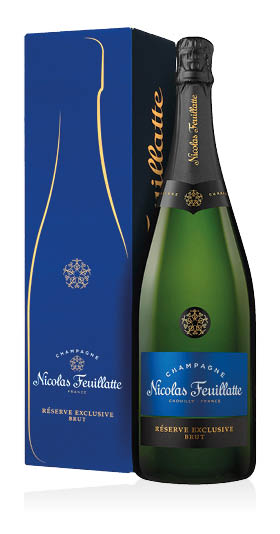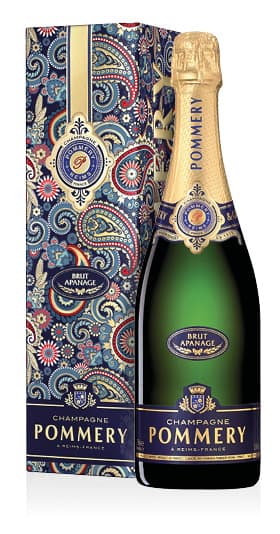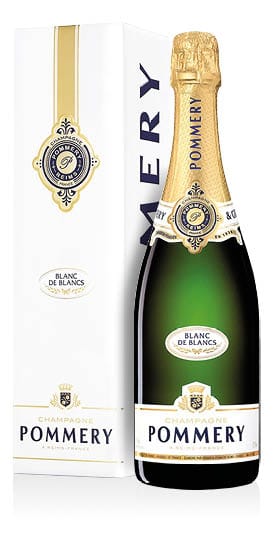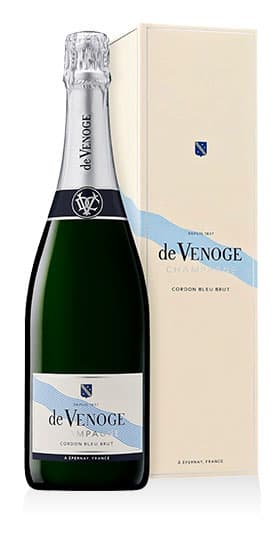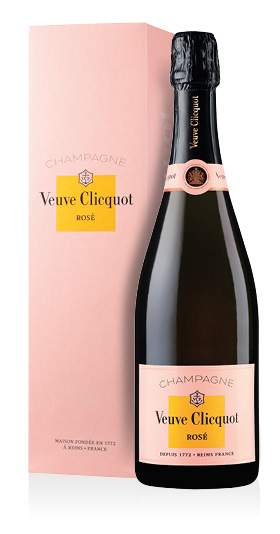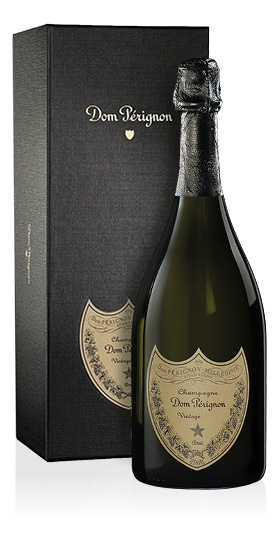Champagne Brut AOC Selection De Saint Gall
0,75 ℓ
France, Champagne
Sale
30.70 €
per bottle
(0,75 ℓ)
40.93 €/ℓ
incl. VAT and taxes
Was: 39.90 €
Lowest price: 30.70 €
Only 11 left
Champagne AOC Brut Harmonie Jean Duclert
Magnum 1,5 ℓ
France, Champagne
Discount 17%
61.50 €
per bottle
(1,5 ℓ)
41 €/ℓ
incl. VAT and taxes
Was: 74.90 €
Lowest price: 74.90 €
Champagne Brut AOC Réserve Exclusive Nicolas Feuillatte
Magnum 1,5 ℓ, Gift box
92
90
Discount 10%
80 €
per bottle
(1,5 ℓ)
53.33 €/ℓ
incl. VAT and taxes
Was: 88.90 €
Lowest price: 88.90 €
Free shipping
Champagne AOC Extra Brut Hommage 1921 Damien Hugot
0,75 ℓ
France, Champagne
Discount 14%
39.20 €
per bottle
(0,75 ℓ)
52.27 €/ℓ
incl. VAT and taxes
Was: 45.70 €
Lowest price: 45.70 €
Champagne AOC Pas Dosé Integral Charles Ellner
0,75 ℓ
90
90
Discount 14%
35.40 €
per bottle
(0,75 ℓ)
47.20 €/ℓ
incl. VAT and taxes
Was: 41.20 €
Lowest price: 41.20 €
Champagne AOC Brut Grande Réserve Collection Exception Sophie Bouchet
0,75 ℓ
France, Champagne
Discount 33%
31.20 €
per bottle
(0,75 ℓ)
41.60 €/ℓ
incl. VAT and taxes
Was: 47.10 €
Lowest price: 47.10 €
Only 5 left
Champagne AOC PN VZ 19 Bollinger
0,75 ℓ, Gift box
94
Sale
124 €
per bottle
(0,75 ℓ)
165.33 €/ℓ
incl. VAT and taxes
Was: 144 €
Lowest price: 124 €
Free shipping
Champagne Brut AOC Apanage Pommery
0,75 ℓ, Gift box
92
91
Sale
47.20 €
per bottle
(0,75 ℓ)
62.93 €/ℓ
incl. VAT and taxes
Was: 48.10 €
Lowest price: 48.10 €
Champagne AOC Brut Nature Silver André Clouet
0,75 ℓ
France, Champagne
Sale
37.50 €
per bottle
(0,75 ℓ)
50 €/ℓ
incl. VAT and taxes
Was: 41.40 €
Lowest price: 37.40 €
Champagne AOC Cuvée Spéciale Marquis de Pomereuil
0,75 ℓ
France, Champagne
Discount 37%
31.40 €
per bottle
(0,75 ℓ)
41.87 €/ℓ
incl. VAT and taxes
Was: 49.90 €
Lowest price: 49.90 €
Champagne Brut Blanc de Blancs AOC Apanage Pommery
0,75 ℓ, Gift box
93
Discount 16%
54 €
per bottle
(0,75 ℓ)
72 €/ℓ
incl. VAT and taxes
Was: 64.90 €
Lowest price: 64.90 €
Champagne Brut AOC Cordon Bleu De Venoge
0,75 ℓ, Gift box
91
91
Sale
44.20 €
per bottle
(0,75 ℓ)
58.93 €/ℓ
incl. VAT and taxes
Was: 49.30 €
Lowest price: 44.60 €
Champagne AOC Brut Réserve Vollereaux
0,75 ℓ
90
Sale
33.80 €
per bottle
(0,75 ℓ)
45.07 €/ℓ
incl. VAT and taxes
Was: 38.70 €
Lowest price: 33.80 €
Champagne Brut AOC Grande Cuvée 171ème Édition Krug
0,75 ℓ, Gift box
94
96
280 €
per bottle
(0,75 ℓ)
373.33 €/ℓ
incl. VAT and taxes
Free shipping
Champagne Brut Rosé AOC Veuve Clicquot
0,75 ℓ, Gift box
92
92
59.50 €
per bottle
(0,75 ℓ)
79.33 €/ℓ
incl. VAT and taxes
Champagne AOC Extra Brut Blanc de Blancs Grand Cru Damien Hugot
0,75 ℓ
France, Champagne
Discount 15%
44.90 €
per bottle
(0,75 ℓ)
59.87 €/ℓ
incl. VAT and taxes
Was: 52.90 €
Lowest price: 52.90 €
Champagne Brut AOC Prestige 2011 Charles Ellner
0,75 ℓ, Gift box
France, Champagne
Discount 14%
40.80 €
per bottle
(0,75 ℓ)
54.40 €/ℓ
incl. VAT and taxes
Was: 47.60 €
Lowest price: 47.60 €
Champagne Brut AOC Vintage 2015 Dom Pérignon
0,75 ℓ, Gift box
260 €
per bottle
(0,75 ℓ)
346.67 €/ℓ
incl. VAT and taxes
Free shipping
{Snippet: CHAMPAGNE}



